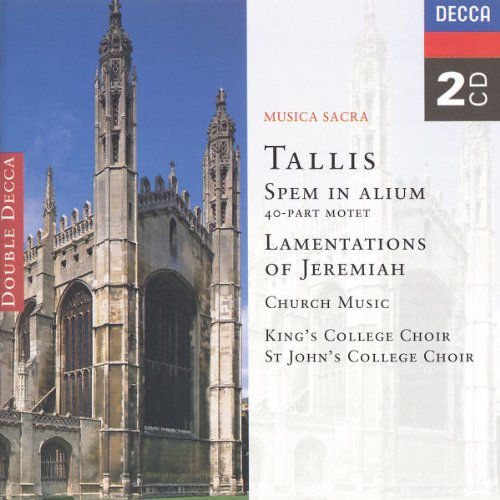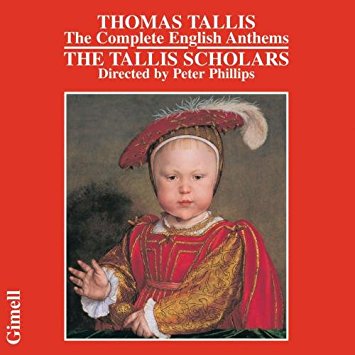Ca 1505-1585
Tallis served as an organist and in other professional capacities for four English monarchs, including in the Royal Chapel. The first definite date marking the start of Tallis' musical career is 1532, when he was appointed organist of Benedictine Priory in Dover. The year 1537 found him at his second job, organist at St Mary-le-Hill in Billingsgate, London, and then on to Waltham Abbey in London until its dissolution in 1540 under Henry VIII. The unemployed Tallis then set out to find work, which he did in 1541 at Canterbury Cathedral as a lay clerk. Finally, he settled into the King's service, appointed as a Gentleman of the Chapel Royal in 1543. He sang with the Chapel Royal, played the organ, helped in running the choir, and continued to compose. In 1575, with William Byrd, Tallis secured a monopoly on printing music and music paper in England. Tallis remained with the Chapel Royal until his death in 1585, while finding time to marry his wife Joan and taking on the young Byrd as a pupil (both probably around the same time, in 1552).
Though Tallis' music includes a wide range of styles and objectives, the bulk of his output is choral music, both in the older Latin motet style and the newer English anthem style. He was not especially interested in technical counterpoint as such, and his settings have a consequent air of serenity about them that arises from the straight-forward musical means used to develop melodic ideas. He has a striking range from straightforward hymn tunes that are still used today through to the remarkable motet Spem in Alium which has 40 different voice parts and develops a remarkable 'wall of sound' out of which the occasional points when the whole choir comes together are deeply thrilling. The Lamentations of Jeremiah, probably his last work is also his most highly respected. This fine dramatic piece contains wonderful melodies, finely wrought counterpoint, and delicious dissonances; for its wealth of invention and expressive intensity, it is unique not only in Tallis's output but in English Renaissance music as a whole.

Choral Works
This is a bumper collection of Tallis, not badly priced with plenty to enjoy. It's largely the Latin motets and includes both the unique Spem in Alium and the incomparable Lamentations of Jeremiah. There's a mix of performers - Spem is down to the Cambridge University Music Society (there are just too many parts for a college choir), while the rest is by John's and King's. Although professionally produced it almost has the feeling of a live recording with the odd fluffed note - but not enough to put the listener off.
Spem in alium, In manus tuas, In ieunio et fletu, Te lucis ante terminum I, Te lucis ante terninum II, Ecce tempus idoneum, Veni redemptor gentium, O nata lux de lumine, Salvator mundi, Derelinquat impius, Vidente miraculum, Lesson, Sancte Deus, Lamentatio Ieremiae I, Lamentatio Ieremiae II, Te deum, Iam lucis orto sidere, Carifica me, pater, Fantasy, Audivi vocem, Dum transisset sabbatum, Honor, virus et potestas, Loquebantur variis linguis

Complete English Anthems
The Tallis Scholars are on home ground in this excellent recording of the English anthems, which are sometimes overshadowed by Tallis' remarkable motets. Best know is If ye love me, a simple but beautifully written anthem, here in its original all-male format rather than the more commonly performed SATB arrangement. A great CD every Tallis lover should have.